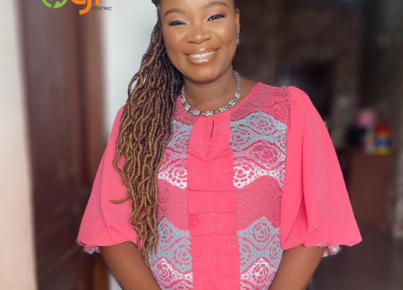[dropcap custom_class=”normal”] Wohooooo, I’m so excited about this months gemstones D*I*A*M*O*N*D*S. I love me some diamond. Over the years, diamonds have been thought to be the, “King of all birthstones,” This is a great way to celebrate a birthday in the month of April. They make an incredible gift for the receiver! [/dropcap]
Diamond
Diamond is a powerful love stone. It bonds relationships and enhances love. It generates longevity and honesty of relationships, and engenders trust between two partners. It increases harmony, not only in romantic relationships, but in all areas. This stone is believed to enhance mental clarity and increases concentration.
To those of you not familiar with Diamonds, here is a crash course for you.
Diamonds are the worlds most precious and valuable gemstone. They are forever, they are a girls best friends or rather “MY” best friend. Whatever cliché you want to use, the fact is the world loves diamonds. They are opaque crystals and the hardest naturally occurring gemstone. They are formed meters below the earth under high temperature and pressure.
Where are diamonds found?
There are a few number of diamond mines in operation today. South Africa, Namibia, Botswana, the Democratic Republic of Congo, Angola, Tanzania and Sierra Leone to name a few in Africa (65% of the world’s diamonds come from African nations). Also Russia, India, Canada, U.S, Brazil and Australia-the major industrial diamond producer.
A lot of thought goes into buying diamond jewelry or accessories. Diamonds are rare, expensive and very valuable. For example if you are looking for the perfect diamond ring to buy your girlfriend or a diamond necklace for your mom, how do you determine the value of diamonds. What do you pay attention to?
There’s and industry standard called the 4C’s for describing diamonds. CUT, CLARITY, COLOUR and CARAT WEIGHT. I’ll summarize all four quickly. This should help you ask the right questions.
Cut
Though extremely difficult to analyze or quantify, the cut of any diamond has three main attributes. Fire – the dispersion of light into the colors of the spectrum, sparkle – the pattern of light and dark areas and the flashes of light, or sparkle, when a diamond is moved and brilliance – the total light reflected from a diamond. As a value factor, cut refers to a diamond’s proportions, symmetry and polish. Ideally it is safe to go for a good or excellent cut.

Clarity
Clarity is a measure of the number and size of the tiny imperfections that occur in almost all diamonds. Many of these imperfections are microscopic, and do not affect it’s beauty in any discernible way.
Chart shows the different levels of clarity
- FL: Completely flawless
- IF: Internally flawless; only external flaws are present, which can be removed by further polishing the stone
- VVS1 – VVS2: Only an expert can detect flaws with a 10X microscope. By definition, if an expert can see a flaw from the top of the diamond, it is a VVS2. Otherwise, if an expert can only detect flaws when viewing the bottom of the stone, then it is a VVS1
- VS1 – VS2: You can see flaws with a 10X microscope, but it takes a long time (more than about 10 seconds)
- SI1 – SI2: You can see flaws with a 10X microscope
- I1 – I3: You can see flaws with the naked eye. Consider avoiding I2-I3 diamonds.

Color
Color manifests itself in diamonds as a pale yellow. This is why a diamond’s color grade is based on its lack of color, grading the whiteness of a diamond. The less color diamonds have, the higher its color grade. In Diamonds, rarity equals value. A color grade of D is the highest possible, while Z is the lowest.
 Fancy Diamonds
Fancy Diamonds
The colored “Fancy” diamonds are considered to be the most rare and expensive types of diamonds. With fancy color diamonds—the ones outside the normal color range—the rare and valuable colors are saturated yellows (canary), pinks, blues, and greens. In all cases, even very slight color differences can have a big impact on value. Ones with good color are very rare and can sell for much more per carat than white diamonds.

 **** TIP**** How the diamond is set can make a difference, too; you might not want to put a truly colorless diamond in a yellow gold setting since the yellow color will reflect in the stone. On the other hand, a slightly yellow stone will appear whiter in a yellow gold setting.
**** TIP**** How the diamond is set can make a difference, too; you might not want to put a truly colorless diamond in a yellow gold setting since the yellow color will reflect in the stone. On the other hand, a slightly yellow stone will appear whiter in a yellow gold setting.
Carat Weight
Diamond carat weight is the measurement of how much a diamond weighs. A metric “carat” is defined as 200 milligrams. Each carat can be subdivided into 100 ‘points’. For example 1ct is 100 point; 0.5ct is 50 points.
When a single piece of jewelry has multiple stones, the total mass of all diamonds or gemstones is referred to as “Total Carat Weight” or “T.C.W.”
All else being equal, the price increases with diamond carat weight, because larger diamonds are more rare and more desirable. But two diamonds of equal carat weight can have very different values (and prices) depending on three other factors of the diamond 4C’s: Clarity, Color, and Cut.

 An additional factor will be “SHAPE”. This is based on personal preference
An additional factor will be “SHAPE”. This is based on personal preference
Are you ready to pop the question. When it comes to diamonds, most consumers tend to use the words “cut” and “shape” interchangeably. But for diamond professionals, there is a big difference. Diamond Shape refers to the outline of the stone (pear, oval, round, etc.). Diamond cut refers to a stone’s facet arrangement. So a shape can be faceted in a variety of ways, or cutting styles. Here are a few popular shapes with round being the most popular.

What is the largest diamond found?
The largest diamond stone ever found was the Cullinan Diamond from South Africa. It was 3106.75 carats (1.37 lbs or 621.35 g). It was cut first into nine large stones, numbered I through IX. The Cullian I or “start of Africa” ( FEATURED) is 530 carats and the largest-cut fine-quality colorless diamond in the world. The Cullian was presented to King Edward VII on his 66th birthday on November 9th, 1907. What did you get for your last birthday? Lol
The cullian diamonds are scattered throughout the British royal collection.The Cullian I is currently set in the head of the Sovereign’s Sceptre with Cross.
How do you care for diamond jewelry?
When storing, keep it away from other jewelry because diamonds are very hard and can scratch your other jewelry.
You should avoid wearing your diamond jewelry when working with household chemicals. Although a diamond is hard, it can chip so it is best not to wear it if it may come in contact with other objects.
Diamonds can be cleaned safely with lint-free cloths, commercial jewelry cleaning solutions, and household detergents.
Harsher cleaning methods are not recommended for home use. These include powdered abrasive household cleansers, ultrasonic cleaners, and steam cleaners.
To see some of my best selling handmade jewelry, go to: www.itorookon.com
Visit my jewelry listing page on Bellafricana: www.bellafricana.com/listing/lagos-jewelry-itoro-okon/




